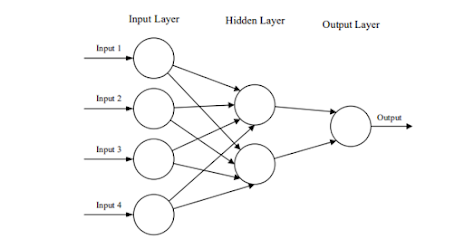INTRODUCTION:
The excessive use
of petrol and diesel is depleting the Earth of its resources. These are
non-renewable resources which once exhausted will pose a huge conundrum for us.
To overcome this, our scientists have been working towards alternative
solutions for centuries. One of the most promising course of action is using
wind energy. Scientist have had positive developments in this field and are
still working to improve it. Wind is a clean and inexhaustible source of energy
which was sought out after World War II. Use of wind energy tackles many
prominent problems such as limitation of fossil fuels, global warming,
green-house effect, etc. Wind power has easily become the most effective option
of energy in many countries. According to European Wind Energy Association, approximately,
56% of electrical needs of Ireland and 46.2% of Denmark’s is being met wind
power. As for India, according to Hossain, the total onshore wind potential of
India is around 2000GW-3000GW. Wind energy has become one of the most
recognized forms of renewable source of energy. Wind turbines, especially, the
three bladed turbines are very popularized today. Now, researchers are working
on ways to improve the technology and make it more innovative. One such area of
focus is the multi rotor wind turbines.
METHODOLOGY:
Use of conventional horizontal axis wind turbine has worked for us for a long time but newer and more innovative methods are taking up the field today. Changes made in the conventional turbines like increase in diameter of the rotor increases the blade weight which in turn reduces the power output. This affects the economy drastically. To solve such problems, multi rotor wind turbines are being sought out. This technology promises the idea of achieving higher capacities per tower as compared to the conventional turbines. Multi rotor wind turbines can be distinguished into coplanar multi rotor or array wind turbines, counter rotating wind turbines and coaxial wind turbines.
COUNTER-ROTATING WIND TURBINES:
In 2004 Jung S N, No T S and Ryu K W developed a 30kW counter-rotating wind turbine system. Counter rotating wind turbines use two rotors and thus produce higher power than a single rotor turbine, depending on the distance between the rotors. There in an increase of about 21% in the power coefficient if the distance between the rotors is halved. Contra-rotation wind energy collection with two rotors, one behind the other, can gain up to 40% more energy from a given swept area as compared with a single rotor.
COPLANAR WIND TURBINES:
Work on co-planar wind turbines has been going on since early 1930s. German scientist Honnef worked diligently on it till he had to stop due to WWII. In mid-1980s scientist in Netherlands and Dutch collaborated to work on a 300kW turbine which worked effectively for around 15 years. Many more scientists are still working on multi rotor systems.
COAXIAL WIND TURBINES:
On the other hand, use of coaxial, multiple rotors has multiplied the output energy. Researcher Douglas Selsam from the California Energy Commission developed coaxial wind turbines and also designed the Sky Serpent-multi rotor wind turbine. In 2005, Sandip Kale and Dr. S.N. Sapali from College of Engineering Pune, developed coaxial series rotor wind turbine using four rotors of 700mm diameter. The sky serpent uses small rotors to catch more wind for less cost making it feasible and cheap to install. It uses only one-tenth of the conventionally used blade material and still provides the same power output.
Factors involving the evaluation of multi rotor
turbines are-
· Feasibility
· Comparison with existing wind turbines
· Technological advantages
· Security of expected power performance
· Cost
· Reliability
· Impact of Innovation
Safety
CONCLUSION:
Assessing the models of multi rotor turbines using the above factors showed that-
While all three multi rotor turbines are feasible, the array turbines have a better price advantage and also have the best review when compared with existing multi rotor designs. The coplanar array turbines are also reliable and have a bright technological advantage. On the other hand, unidirectional coaxial wind turbines are highly reliable and have a higher security of expected performance. Coaxial wind turbines have strong technological aspects and also have a higher innovative impact. Thus, coaxial series wind turbines show the most encouraging results.
REFERENCES
Credits : Bhakti Gujrati(FY Civil )
Team R&D
NOTE:-This blog is meant for Educational Purpose only .We do not own any Copyrights related to images and information , all the rights goes to their respective owners . The sole purpose of this blog is to Educate, Inspire, Empower and to create awareness in the viewers. The usage is non-commercial(Not For Profit) and we do not make any money from it.
Write your Feedback here:
https://forms.gle/C3ybXMPPUaJBgP618
FOLLOW US ON:-
INSTAGRAM :
https://bit.ly/coep_blogs_insta
LINKEDIN:
https://bit.ly/coep_blogs_linkedIn
YOUTUBE:-
https://bit.ly/Coep_blogs_YouTube









